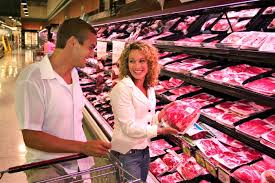Consumer confidence was listed as a priority in the new national beef strategy, released in the beginning of January. The industry has very high expectations for this strategy and is making consumer interests prominent. Here’s why. Despite the increase in demand for meat protein, consumers are very confused. They’re misled and are exposed to anti-beef attitudes. Although this has little relevance to food hot off the grill, it’s this kind of junk marketing and science that chips away at some consumers’ faith.
Canadian beef supplies are tight, and producers know they need to catch up. The sector is still rebounding and rebuilding from the mad cow scare, and very little new land is opening up on which to graze cattle, or grow feed for them. The national strategy aims to help fix those woes. The country’s five main beef organizations say Canadian beef farmers will get their share of the growing and affluent global market for meat protein only by working together. The sector must work as a national industry.
No one ” feed producer, feedlot operator, processor, whatever ” is an island in this market. If the sector can’t increase demand, production efficiency and carcass value, while figuring out ways to compete with other countries who have cheaper costs of production, it will linger behind them. Bridging the fierce independence of farming with the need for co-operation has long been a challenge for other commodities. It’s the beef sector’s turn at bat.


